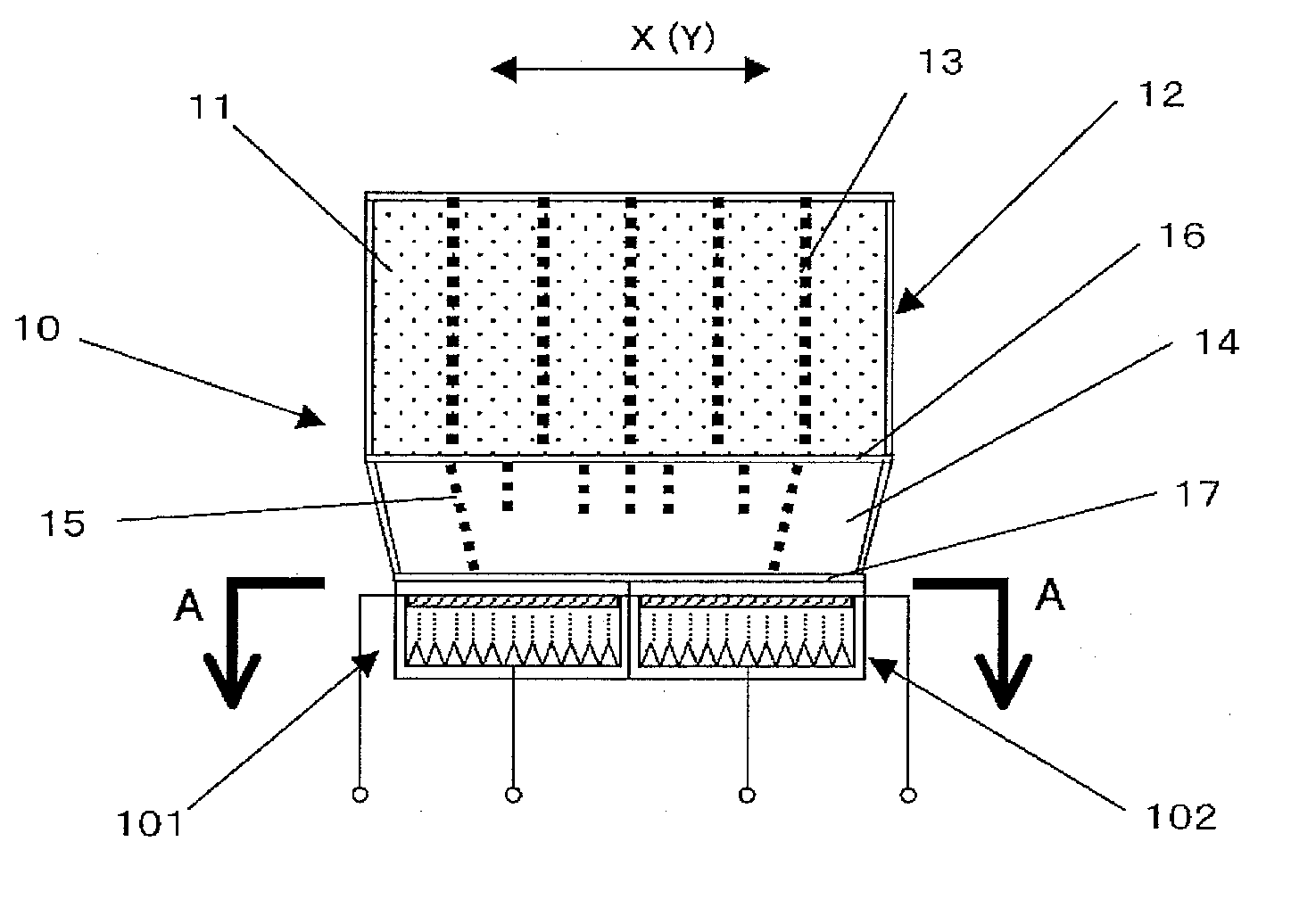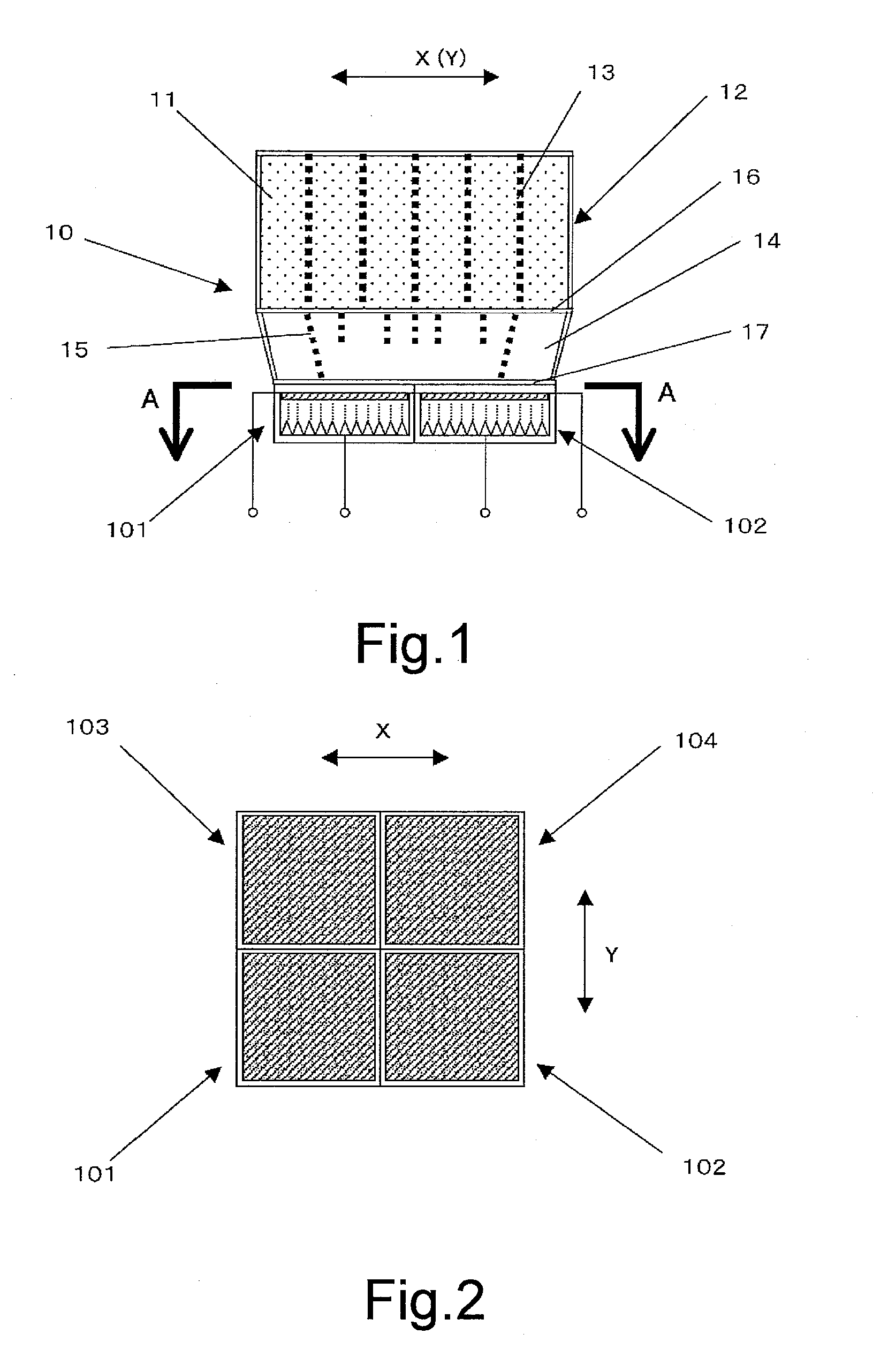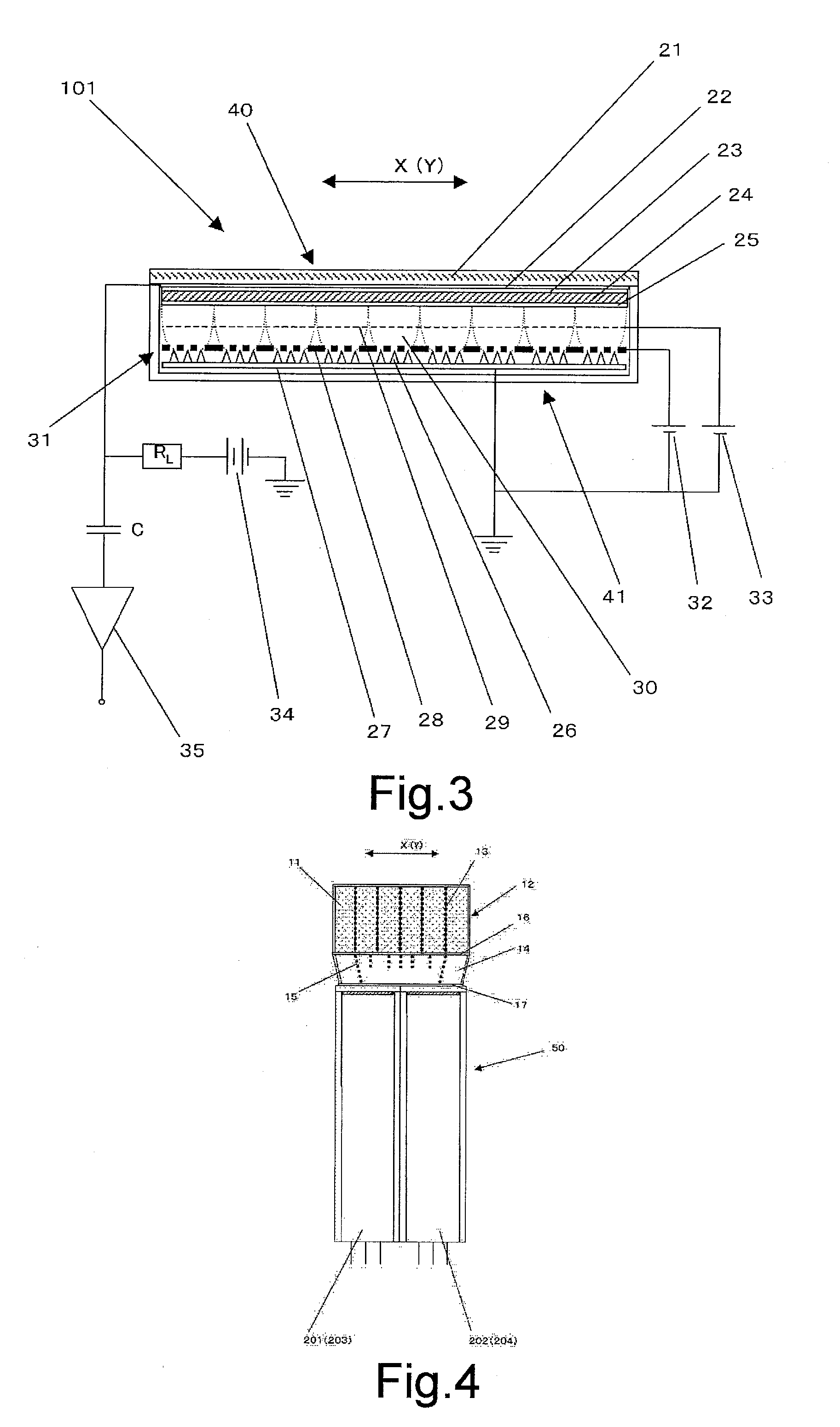Radiation detector
a detector and radiation technology, applied in the field of radiation detectors, can solve the problems of complex disposed pluralities of electrodes or dynodes, inability to realize at a low cost, limited space, etc., and achieve the effects of low cost, high sensitivity, and simple detector structur
- Summary
- Abstract
- Description
- Claims
- Application Information
AI Technical Summary
Benefits of technology
Problems solved by technology
Method used
Image
Examples
embodiment
[0040](Embodiment) The drawings illustrate the structure of a radiation detector according to the present invention, and the detailed description thereof is provided according to the embodiment. FIG. 1 is a cross-sectional view in the X direction obtained by viewing a radiation detector 10 from the Y direction. In this embodiment, an isotropic voxel detector is described, so a cross-sectional view in the Y direction (side view) obtained by viewing the radiation detector 10 from the X direction also has the same shape as that of FIG. 1. The radiation detector 10 includes a scintillator array 12, which is divided, by appropriately inserting a light reflective material 13, into 36 scintillators 11 that are compactly arranged in two dimension in a manner of six scintillators in the X direction and six scintillators in the Y direction; a light guide 14, which is optically combined with the scintillator array 12 and is divided into a plurality of small blocks, and includes embedded lattic...
PUM
 Login to View More
Login to View More Abstract
Description
Claims
Application Information
 Login to View More
Login to View More - R&D
- Intellectual Property
- Life Sciences
- Materials
- Tech Scout
- Unparalleled Data Quality
- Higher Quality Content
- 60% Fewer Hallucinations
Browse by: Latest US Patents, China's latest patents, Technical Efficacy Thesaurus, Application Domain, Technology Topic, Popular Technical Reports.
© 2025 PatSnap. All rights reserved.Legal|Privacy policy|Modern Slavery Act Transparency Statement|Sitemap|About US| Contact US: help@patsnap.com



